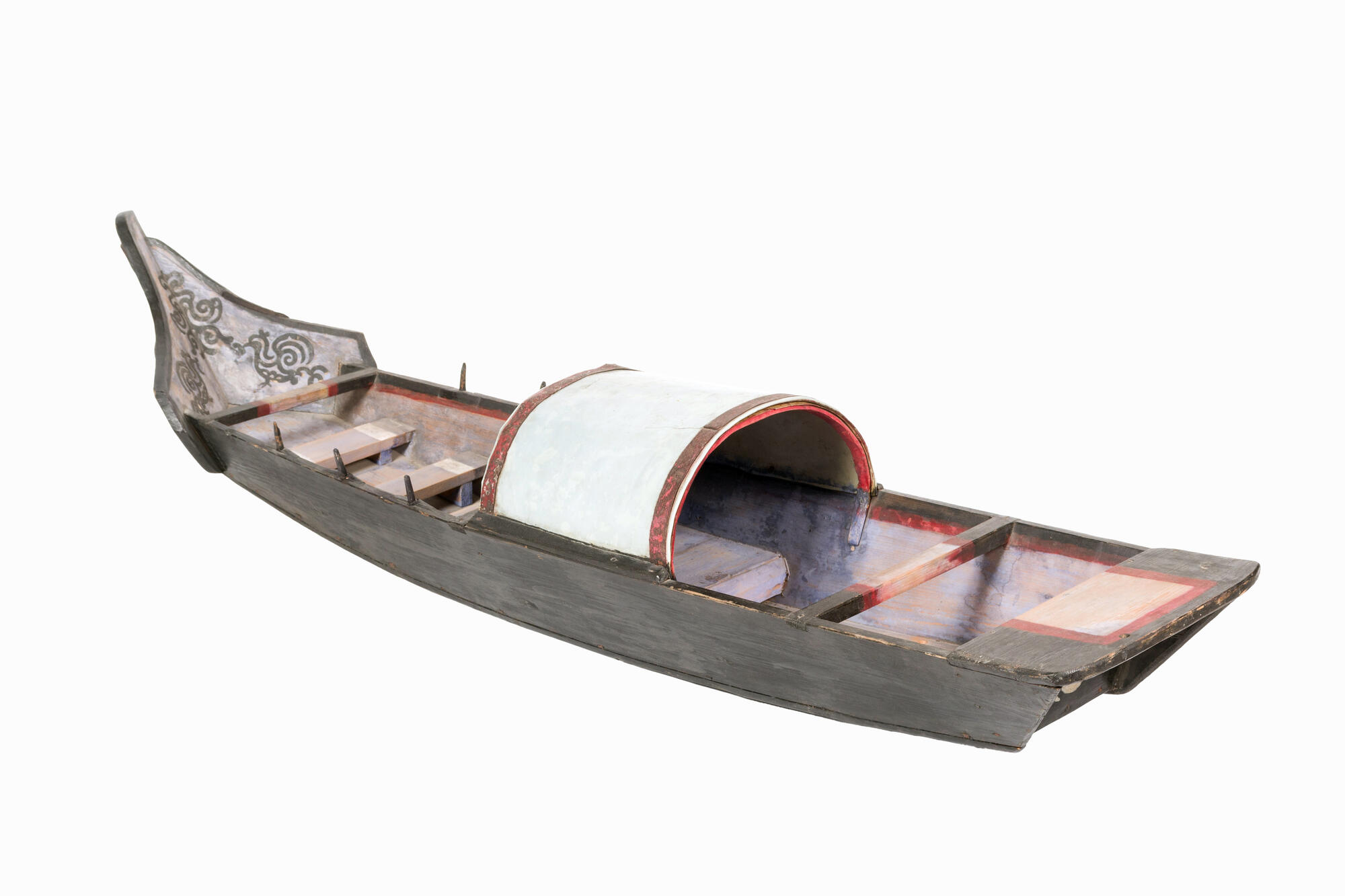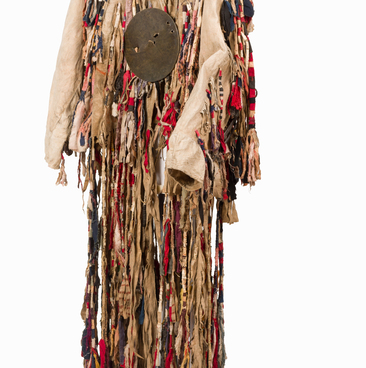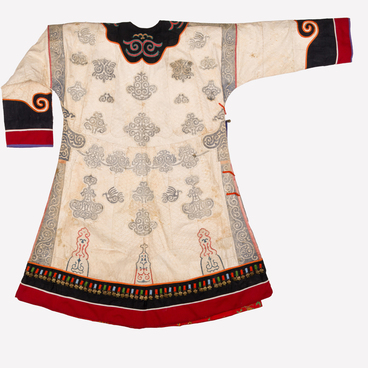This boat model was made by the Nanai master Samba Yakovlev in the second half of the 20th century. It is a reduced copy of an ogda wedding boat. This means of transportation had a composite design.
Traditionally, such boats were built of three (pointed) or six (with a stern and an over-water plank bow) planks. Large ogdas had a slightly bent bottom in the middle, the sides of which protruded in the form of a slipper. The stern of Nanai boats was blunt. The bow usually consisted of two planks that came together at an obtuse angle.
The boat was steered with a pole, as well as large and small kayak oars. There could be from 3 to 18 pairs of rowers in such a boat. Their seats were located closer to the bow, sometimes up to the cross-bars. Quite often the stern had a wide plank for a seine, and sometimes an aft accommodation was built there.
In an ordinary boat, there was a device for fixing the mast with a sail in the bow after the first cross-bar, and the rest of the boat was for passengers and cargo. This type of boat belongs to the ancient aboriginal culture of fishermen. The complex plank boat was also used in wedding ceremonies.
The Nanai name for a ritual boat is gila. It was distinct in decorative style and size. The gila (unlike a regular boat) had two rowers sitting behind each pair of oars, not one. A large bride’s boat was prepared by relatives. A canopy made of specially processed birch bark was arranged closer to the stern. It was supposed to protect the bride from the sun or rain.
Large painted gila boats were the main means of transportation during the wedding rites and festivities. The bride’s relatives prepared beautiful dowry boats for her departure from her father’s house. The number of boats depended on the amount of property given to the daughter from her parents’ household.
The central part of a
wedding was the moving of the bride to the groom’s house, and the underlying
theme was the girl’s passage to another clan. When the wedding caravan was
ready to depart, one of the relatives would tie a rope to the stern of the
bride’s boat and hold it from the shore. In this way the relatives showed how
dear the girl was to them. Then the rowers would forcefully push on the oars
and break the rope.





